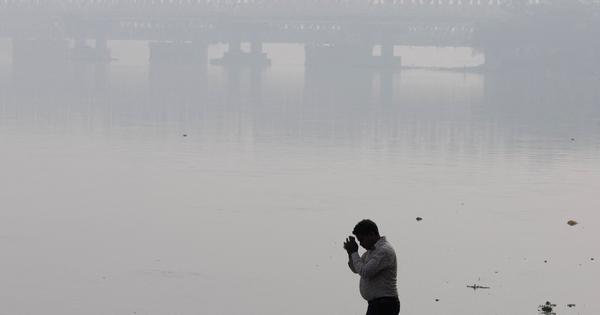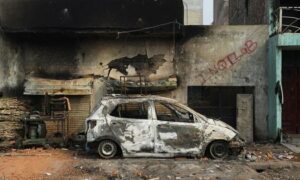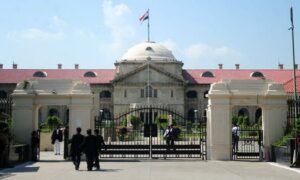
The air quality in Delhi deteriorated to the “very poor” category on Thursday after remaining “poor” for the past few days. The national capital was covered in a toxic haze in the early hours of the day.
The average Air Quality Index at 3.06 pm was 377, categorised as “very poor”, according to data from the Sameer application, which provides hourly updates published by the Central Pollution Control Board.
The overall average AQI a day earlier was 279.
An index value between 0 and 50 indicates “good” air quality, between 51 and 100 indicates “satisfactory” air quality and between 101 and 200 indicates “moderate” air quality. As the index value increases further, air quality deteriorates. A value of 201 and 300 means “poor” air quality, while between 301 and 400 indicates “very poor” air.
Between 401 and 450 indicates “severe” air pollution, while anything above the 450 threshold is termed “severe plus”.
Air quality deteriorates sharply in the winter months in Delhi, which is often ranked the world’s most polluted capital. Stubble burning in Punjab and Haryana, along with the lighting of firecrackers, vehicular pollution, falling temperatures, decreased wind speeds and emissions from industries and coal-fired plants contribute to the problem.
On Thursday, the Air Quality Early Warning System for the national capital stated that the ventilation index in the region remained below the favourable level of 6,000 m²/s, PTI reported.
This index indicates the ability of the atmosphere to disperse pollutants.
It added that weak winds of less than 10 kmph and thick fog prevented pollutants from dispersing, which resulted in a hazy sky.
The dip in the air quality on Thursday comes despite cloud seeding experiments by the Bharatiya Janata Party government in Delhi as a part of its air quality management strategy.
Cloud seeding is the process of combining chemical agents, including silver iodide, dry ice and even common table salt, to condense clouds and increase the chance of rainfall.
Delhi Chief Minister Rekha Gupta said on October 24 that cloud seeding was “a necessity for Delhi”.
On Tuesday, two cloud-seeding trials were held over northwest Delhi’s Burari, Mayur Vihar and Karol Bagh at 12.13 pm and 3.45 pm. However, no rain was observed in the areas.
Another trial on Wednesday was postponed due to a lack of enough moisture in the clouds, the Hindustan Times reported.
The cloud seeding project has been jointly developed by the Indian Institute of Technology Kanpur and the Delhi government.
On Wednesday, IIT Kanpur Director Manindra Agrawal said that due to the low moisture content of clouds, the chances of inducing rain were very small. Agrawal, however, said that data from 15 monitoring stations after the seeding on Tuesday showed a 6%-10% reduction in PM2.5 and PM10 levels.
The Aam Aadmi Party questioned the BJP government in Delhi on the lack of rain following cloud seeding. It accused the Delhi government of “wasting taxpayers’ money” and perpetrating a scam in the name of cloud seeding.
Experts have repeatedly pointed out that the experiment is not “very practical” to tackle air pollution as it is expensive, can only cover a limited area and needs very specific meteorological conditions.
They have also said that the respite from pollution through artificial rains is temporary.
Pollution control measures in place
On October 19, the Commission for Air Quality Management had imposed Stage 2 restrictions under the Graded Response Action Plan to control pollution in Delhi and the adjoining areas in the National Capital Region.
The Graded Response Action Plan is a set of incremental anti-pollution measures that are triggered to prevent further worsening of air quality once it reaches a certain threshold in the Delhi-NCR region.
The second stage of the plan involves a ban on the use of coal and firewood, including tandoors in hotels, restaurants and open eateries. It also includes a ban on the use of diesel generator sets, except for emergency and essential services.
It further comprises measures such as the mechanical sweeping of roads and sprinkling water on them to keep the dust from rising, and intensified inspections for strict dust control measures at construction and demolition sites.
The restrictions under Stage 2 include the curbs under the first stage, which was imposed on October 14.
📰 Crime Today News is proudly sponsored by DRYFRUIT & CO – A Brand by eFabby Global LLC
Design & Developed by Yes Mom Hosting






